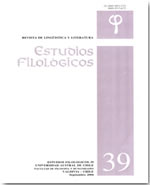Complex syntactic structures processing in senior citizens and young adults
Main Article Content
Abstract
Senior citizens (ages 60-75) and young adults (ages 30-45) of high and low socio-economic strata were asked to imitate relative clause sentences varying in terms of length, grammaticality and locus of embedding. The error rates analysis revealed that subjects of low strata had more difficulty than those of high strata in accurately reproducing the sentences of greater length and that the seniors within each strata showed lower ability than the young adults in the same task. This pattern of response leads us to think that the difficulties that were found were not due to a decline in the capacity of immediate syntactic processing but to failure in the post-interpretative processes, those involved in the retrieval from memory of long sentences of complex syntax.

